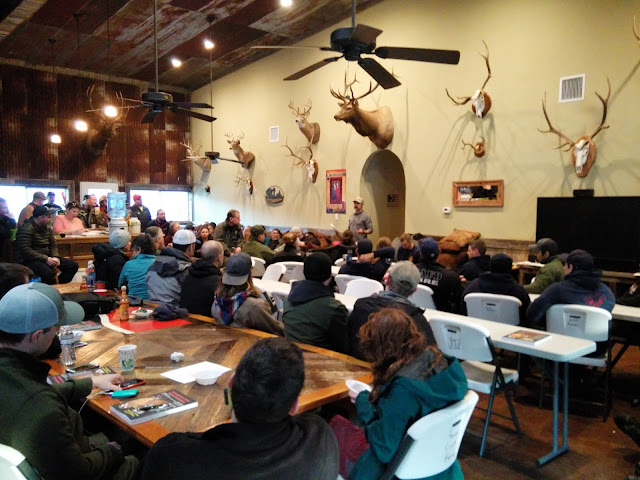 |
| Opening talk |
I recently spent 10 days in Texas to teach back-to-back Small Party Assisted Rescue (SPAR) classes for the National Cave Rescue Commission (NCRC). This all-volunteer organization wants to ensure that people have the best methods to get an injured, sick, or stuck caver out from the underground. Caves are one of the most difficult places to do a rescue, as passages can be tiny and convoluted, there's no way to get a short haul from a helicopter, GPS doesn't work, and there isn't any cell signal. Plus it's dark. And often wet. And sometimes deep.
The Texas regional seminar offered Levels 1 and 2 as well as two SPAR classes. When we started at our classroom, under a pavilion, at the beginning of the week, it was cold! We had coats on and made sure we were in the sun. Fortunately the classroom part is only half a day and rather interactive, such as with splinting your partner with things from your cave pack.
Traveling haul was another one. You can see the awe and amazement about learning this technique. (I seem to have caught a lot of funny expressions!)
Later it was time for minimal gear. How little gear do you need to climb a rope?
The third and last day we had scenarios, and the students rotated through three caves, solving a problem in each. The instructors split up and stayed in the same cave each day, and it was really interesting to see the different ways students solved the problems. Below they've rigged a diminishing loop to a haul system that can be hauled by a climber, which we've nicknamed the Dragon.
It can be a little awkward. But essentially just one person can carry out the rescue as long as the patient is conscious and doesn't have too serious of injuries.
There's more than one way to do it! We always like to practice the scenarios first in a somewhat controlled environment (not far from the ground), then the next day we step it up at short cliffs or caves, and the last day the students have to figure out what method to use.
The guided rappel was my favorite. You basically rappel diagaonally.
The students figured out how to splint him and get him out with minimal gear.
Fortunately they came back again.
It was a really fun week with great people and nice caves. I learned a few new techniques and am re-energized to keep learning more about cave rescue. You can learn more about cave rescue at the NCRC website.
































1 comment:
It's fun to be a tall, strong woman, isn't it!
Post a Comment